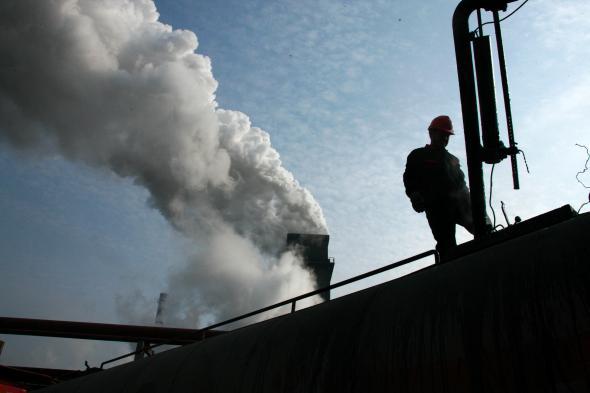“As long as large developing countries like Russia, China, India and Brazil continue increasing their carbon emission on an annual basis, anything we do will be inconsequential.”
This refrain, voiced in this case by Kansas Sen. Pat Roberts yesterday, is a common argument against unilateral steps to reduce U.S. carbon emissions, such as those announced by the White House yesterday. As his colleague Marco Rubio has argued, “the United States is a country, not a planet.” Why take steps that could hurt U.S. industry if other countries—including the world’s largest carbon emitter—will just keep pumping into the atmosphere?
A development today, however, would appear to support the counterargument of U.S. environmentalists who say dramatic U.S. action will spur other countries to reciprocate. He Jiankun, chairman of China’s Advisory Committee on Climate Change, announced that the country’s next five-year plan, which will come into force in 2016, will include a cap on CO2 emissions for the first time. This would be a major policy shift for China, which overtook the U.S. as the world’s largest emitter in 2007 and has thus far supported only carbon limits pegged to economic output rather than an absolute cap. The announcement comes just a day after the Obama administration’s announcement of new rules to cut emissions from power plants by 30 percent, and the timing does not seem coincidental.
As Vox’s Brad Plumer wisely points out, it would be a mistake to take the announcement at face value. He Jiankun is an adviser to the government rather than an official, and we don’t yet know how stringent or strictly enforced the new rules would be.
All the same, I think the politics here matter. From some of rhetoric in Washington, you might get the impression that Chinese leaders are simply blithely unconcerned about emissions. It’s a little more complicated. China leads the world in green energy investments, much of that is manufacturing for export rather than local use. China also appears to finally be taking steps to reduce its coal usage, though it’s still the highest in the world. It began introducing some carbon taxes last year, though enforcement has been mixed.
The Chinese government and official media often present the U.S. position on emissions as deeply hypocritical. China, after all, still has much lower emissions per capita than the United States, and the U.S. and Europe were able to pollute their way to prosperity in an era before concerns about global warming. Why, the argument goes, should China and other developing countries shoulder the burden for a problem largely created by the West?
This argument, paired with the American aversion to any new emissions rules that won’t also apply to China, creates a perfect feedback loop of inaction, with both countries arguing that the issue is the other side’s problem. While still very preliminary, this week’s news could be an indication that the two countries are starting to break out of the cycle and take some action on their own.
India, which is the world’s No. 3 emitter and has been hostile to the idea of emission limits in the past, is a bit more of a mystery. Incoming Prime Minister Narendra Modi talks a big game on climate change and clean energy—he’s written a book on the topic—but whether he’ll be able to square that with his ambitious development agenda is another question.
